Phone: +1 (903) 561-3142
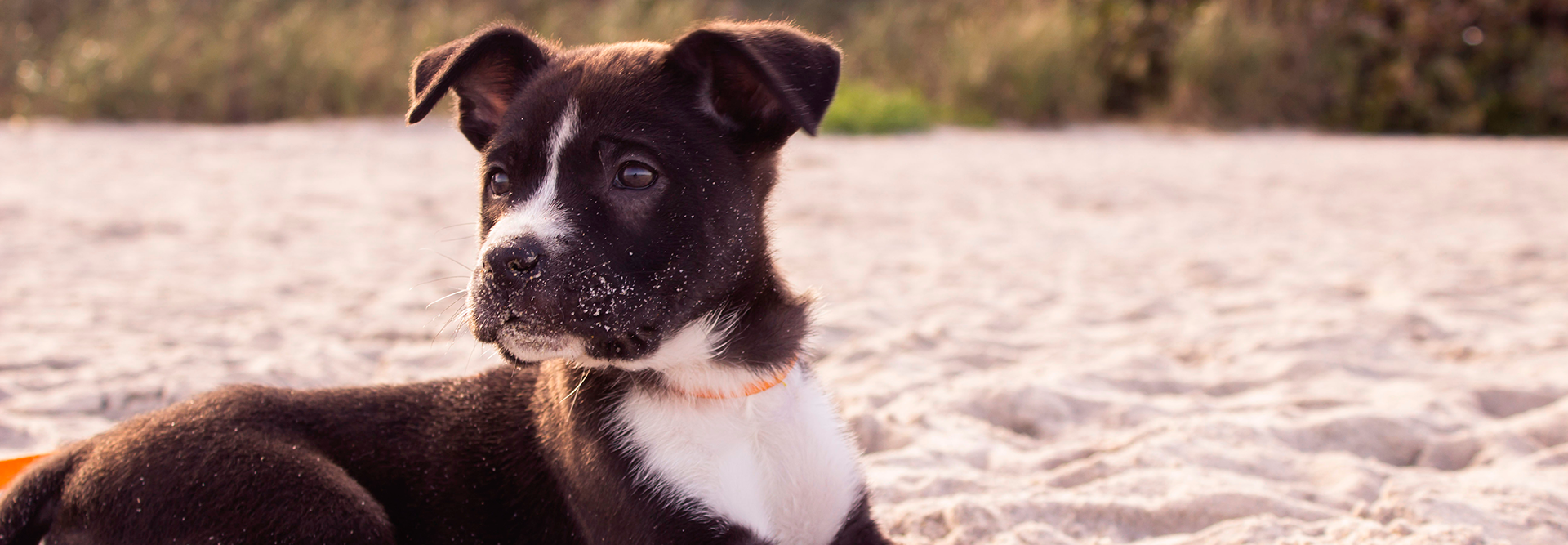
A new puppy means a long life of beautiful memories and unconditional love! Your adorable furry bestie will always be there for you, whether you’re on walks together or playing hide-and-seek. With these wonderful moments together, you’ll also face several challenges that need your attention. Remember: puppies are just like babies. They need you for […]
A new puppy means a long life of beautiful memories and unconditional love! Your adorable furry bestie will always be there for you, whether you’re on walks together or playing hide-and-seek.
With these wonderful moments together, you’ll also face several challenges that need your attention. Remember: puppies are just like babies.
They need you for their happiness and health. Without you, they wouldn’t be able to eat, play, bathe, or live a fulfilling life. That’s why it’s highly important for new puppy parents to have a hands-on approach to puppy care (at least until they mature into adulthood!).
And of course, like with young children, you may also need to deal with some bad behavior. Some puppies, for example, may whine, bite, chew, or jump without warning, which can become problematic.
It’s okay if you don’t know how to handle your new puppy. As long as you make the effort, there’s no reason you and your puppy won’t learn to get along.
On this blog, we share the best advice for new puppy parents. We hope these tips help you take care of your new puppy:
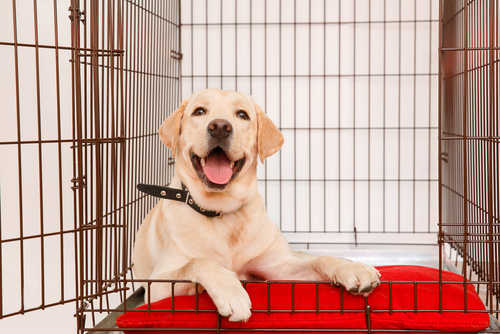
Crates are one of the best puppy products to buy. Why? Well, a crate serves various purposes. It can be your furry friends’ official resting spot, a great training tool, and their personal space.
Just place a soft pillow or blanket inside the crate to help build a comfy atmosphere for rest and relaxation. Some puppy parents may feel that crates are scary or isolate pups from the house. But that’s far from the truth!
Crates are a healthy way to reinforce your furbaby’s natural canine instincts. For example, most canines are den animals, which means they’re super happy in a small, warm and cozy area.
They can also be used for training purposes. Crate training a new puppy is one of the most effective ways to teach puppies how to follow your house rules.
When purchasing a crate, make sure to think about the size of your puppy and its age. A crate cannot be too large or too small.
If it’s too large, your puppy may use the remaining space as a potty spot. If it’s too small, your pup will not be able to move, lay down, stretch, or do other activities.
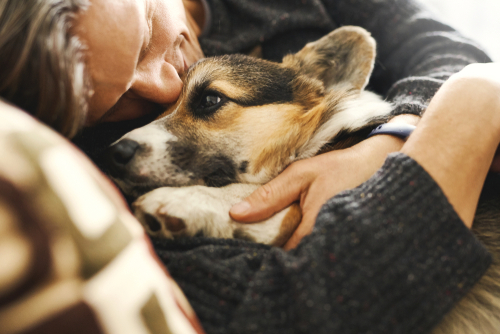
Always keep an eye on your puppy! We mean it. Puppies are curious little creatures (sometimes too much!). They love exploring their home, backyard, and neighborhood at any chance they get.
And if it’s their brand new home, they will want to explore their surroundings more thoroughly. This means you’ll need to be extra careful when you let your pup loose around the home.
Your puppy may also experience boredom, especially without sufficient care or attention. Be sure you’re providing your little buddy with enough stimulus throughout the day so that they won’t get caught in mischief.
Puppies don’t understand the dangers that can be harmful to their health so it’s important that you’re there to keep them out of trouble.
Keep this rule in your mind at all times: if you can’t watch your puppy at home, put them in their crate right away.
For owners with high-energy puppies, check out our blog, 5 Ways to Tire Your High-Energy Puppy Out to learn the best tips on tiring out your energetic puppy.
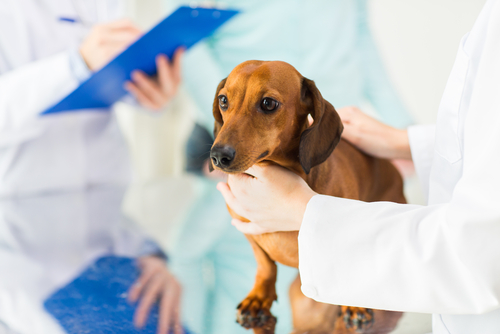
Even if your puppy doesn’t seem sick, set up your first vet visit as soon as possible. You need to know your furry friend’s health condition and how to properly care for them.
On your puppy’s first vet visit, your vet will likely perform a physical exam to learn more about your puppy’s health. Of course, vet visits are usually scary for most young puppies!
To make it a little less stressful, make sure you bring a little snack or toy to give your pup a distraction. You can use this little first vet visit checklist to manage your expectations:
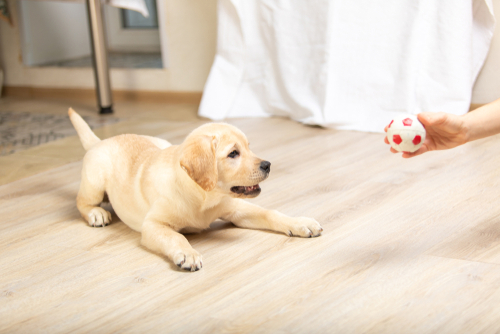
Many puppies have a short attention span. When you mix this with their energetic nature, it can make training nearly impossible. However, training shouldn’t be frustrating for you or your little bundle of energy!
Make it as fun as you can. There are so many fun puppy training games you can play with your little bestie that reinforces training such as:
When training your new puppy, always avoid these 4 common training mistakes that can make your little buddy confused or even resentful. Be persistent and positive to get the most out of your training sessions with your pup!
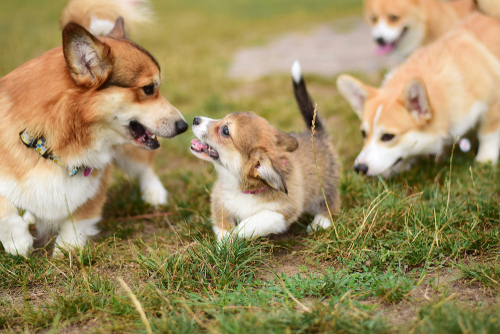
Puppy socialization is a large part of your puppy’s youth. Through proper socialization, your puppy learns how to behave around other dogs and people.
It teaches your puppy to behave, preventing negative behaviors like aggression and fear. You should not throw your puppy into a socialization situation. Instead, slowly introduce them to new people and experiences.
Start taking your little pooch to a dog park or invite your loved ones over to your home. Your puppy should always be calm and happy during socialization.
Here is a quick puppy socialization checklist to help you get started on exposing your puppy to new things:
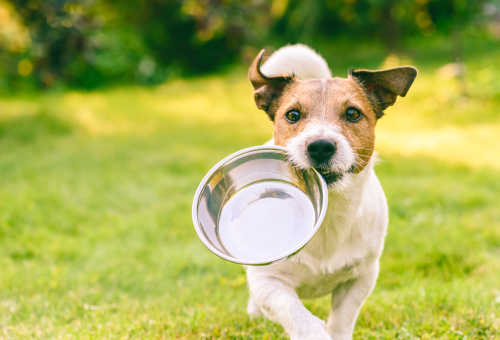
Eating is important for your puppy’s growth and development. Your puppy should only eat at the right times of the day. When your pup isn’t eating, remove their bowl from the floor.
Your furry friend will learn that there’s a feeding routine they need to follow so they’re less likely to eat food. You can leave your pup’s water bowl near them so they are hydrated throughout the day.
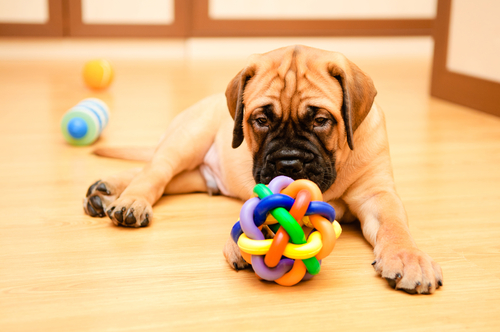
Toys are a must-have dog supply. Toys aren’t just for playtime; it’s also useful for training. Before you go to the store and pick out a toy for your pup, make sure you think about your puppy’s age, size, and energy level.
Your fur-baby needs a toy that’s right for them. For example, teething puppies are less likely to chew on furniture and shoes if they have a teething toy made specifically for them.
You should also purchase all kinds of dog toys to try out what your pup likes best. When training or playing, only provide your pup with 2 or 3 toys to keep them interested.
Aren’t sure which toys are perfect for your puppy? Check out our blog, How to Choose the Right Toys for Your Dog to view which toys are right for your little furry friend!
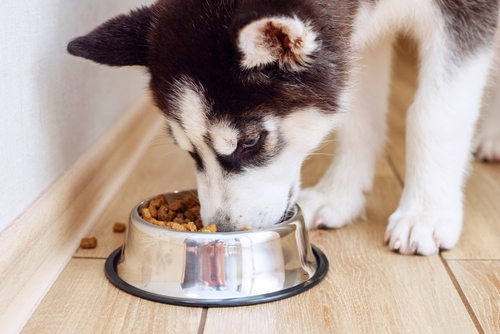
We cannot stress how important nutrition is important for puppies. Puppies need to have a balanced diet with the right amount of nutrients and minerals that help them grow into healthy adult dogs.
Check the labels in your pup’s dog food. Make sure their food isn’t high in fats, salt, or sugar. You should also check the number of calories your puppy’s food has so that it’s the best amount for their growth. As your pup grows, they should only be fed 2 to 3 times a day.
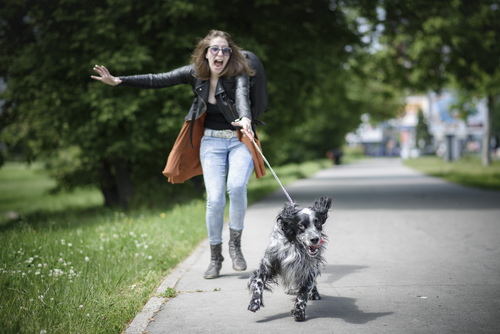
Remember to teach your furry friend how to walk with you outside. Some puppies like pulling leashes or do not enjoy the feel of the collar around their necks.
It’s better to train your puppy to get used to these experiences to avoid any possible problems while outside. Use a yummy doggy treat to encourage your puppy to walk next to you.
Say “heel” every time your puppy is walking by your side. If your puppy has trouble getting used to a leash or collar, try practicing inside the home before moving your training outdoors.
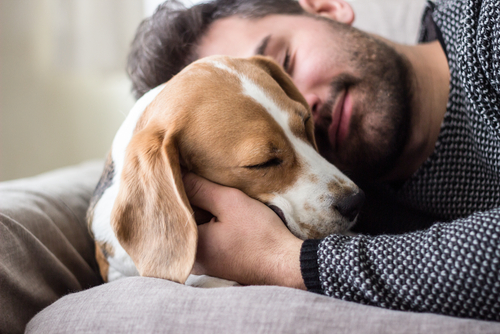
Don’t be afraid to mess up! Accidents may happen a few times. That’s completely normal! Your puppy shouldn’t be hurt or scared if mistakes happen. Always be patient and loving.
Your furry friend is learning about the world. In time, your furry bestie will understand your house rules and the rules of the world. Once your puppy learns, you will be able to enjoy many wonderful times with them!
When you spend time with your furry friend, your puppy is getting to know who you are. It may take a while before they become close to you.
What’s important is that you and your furry bestie continue to bond through close activities together. Be sure sure to follow our tips for new puppy parents closely. With enough time and consistent bonding, you will both be close friends!
Read our blog, How to Help Your Puppy Adjust to Their New Home to learn our tips for helping your new puppy get used to their new home!